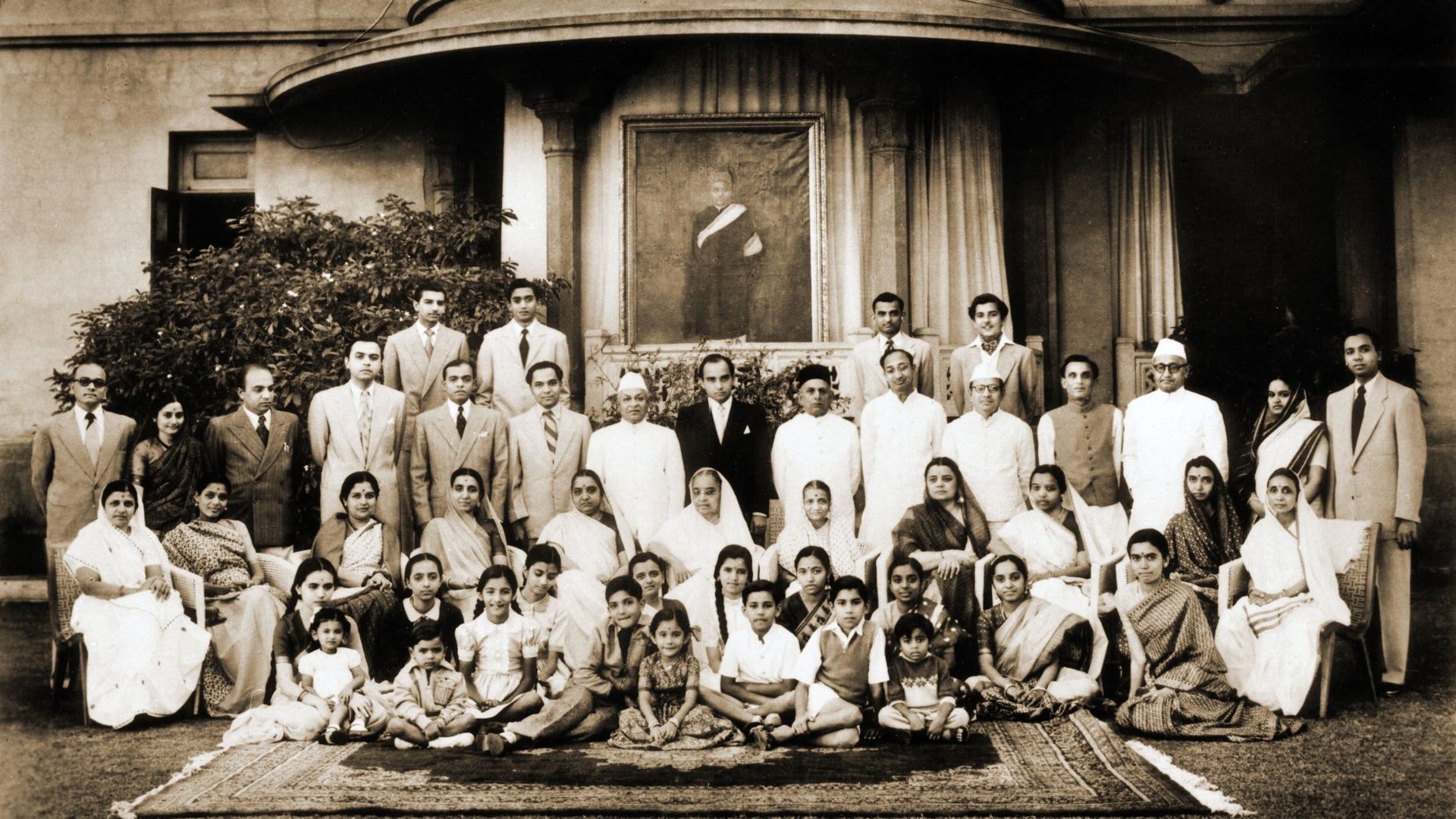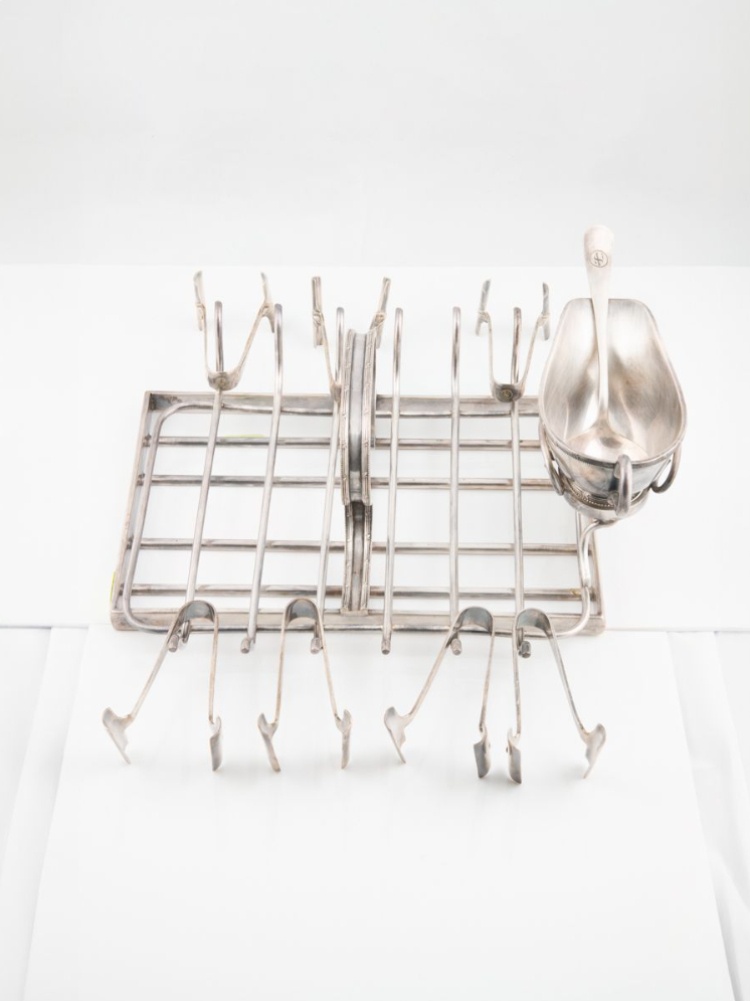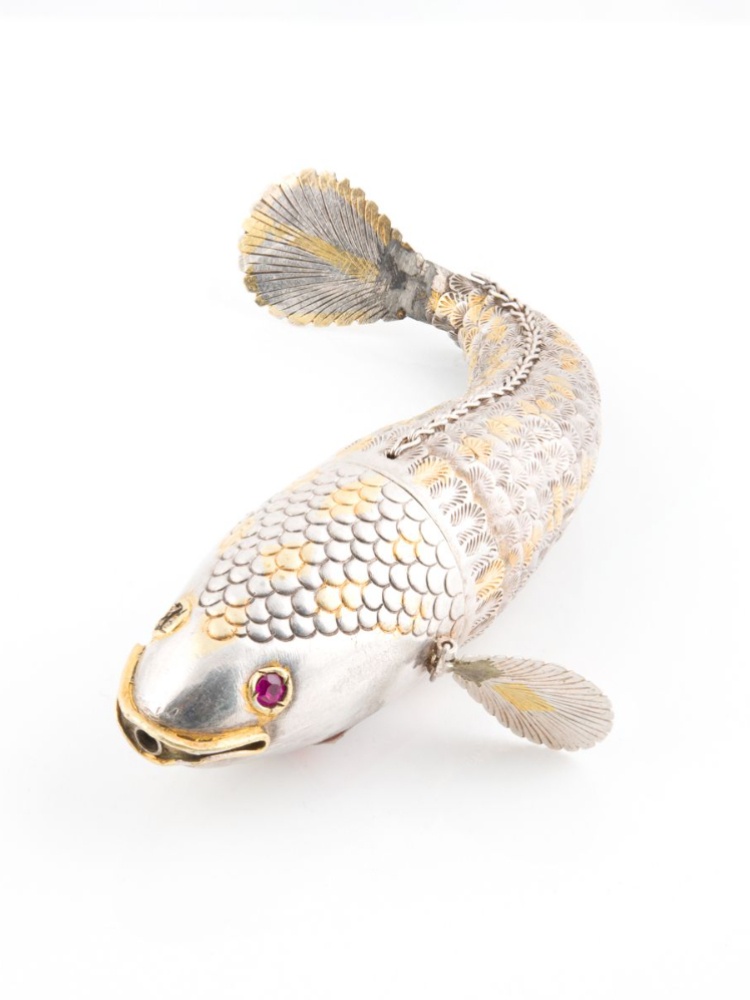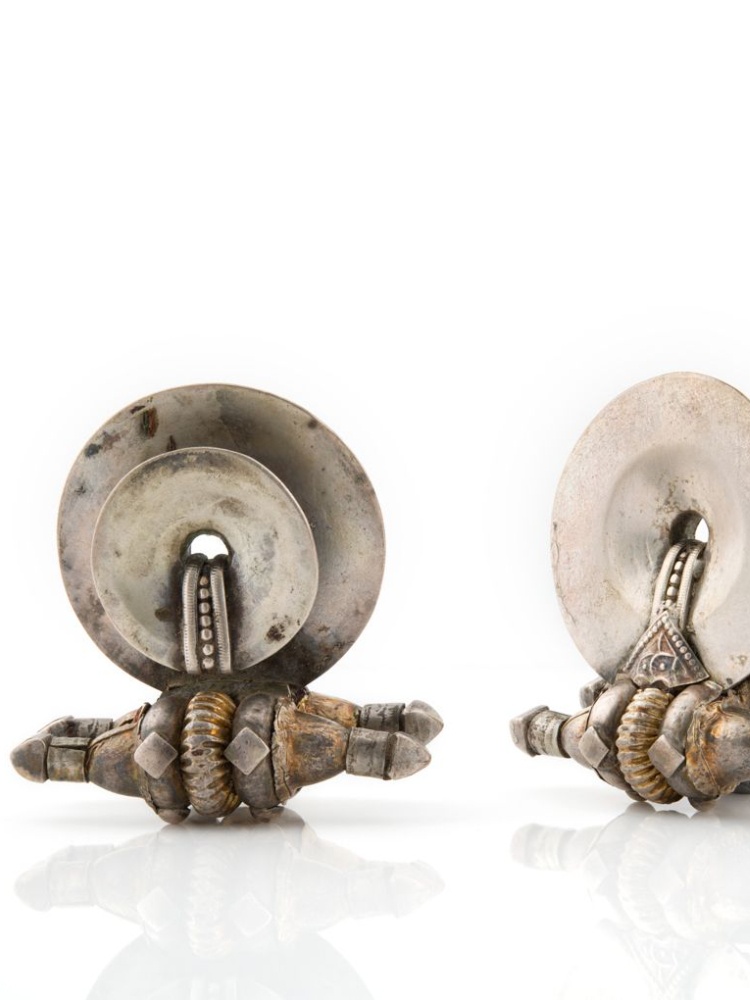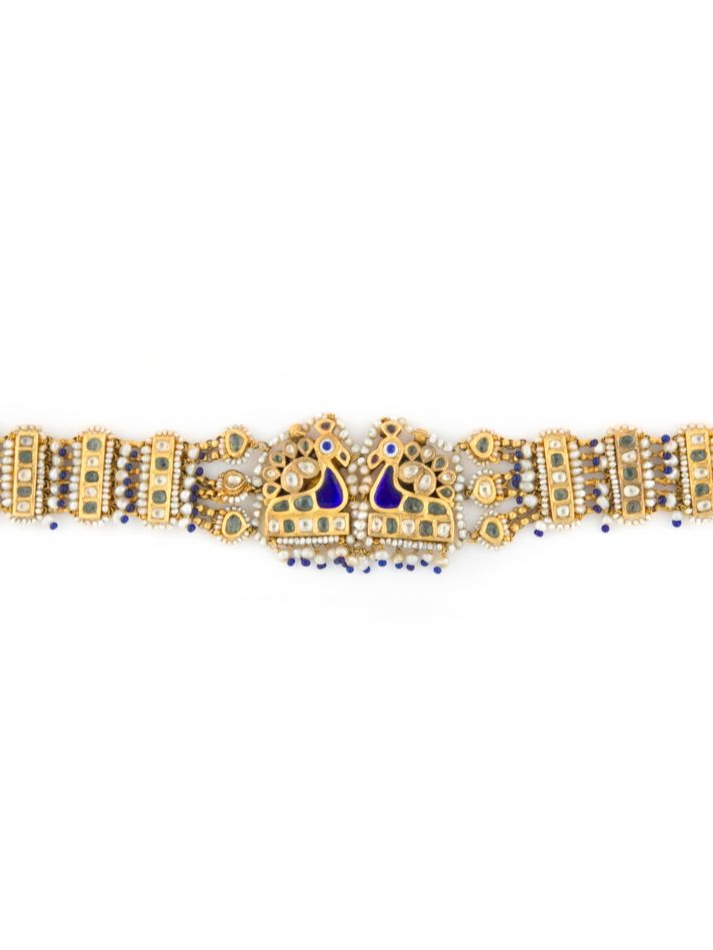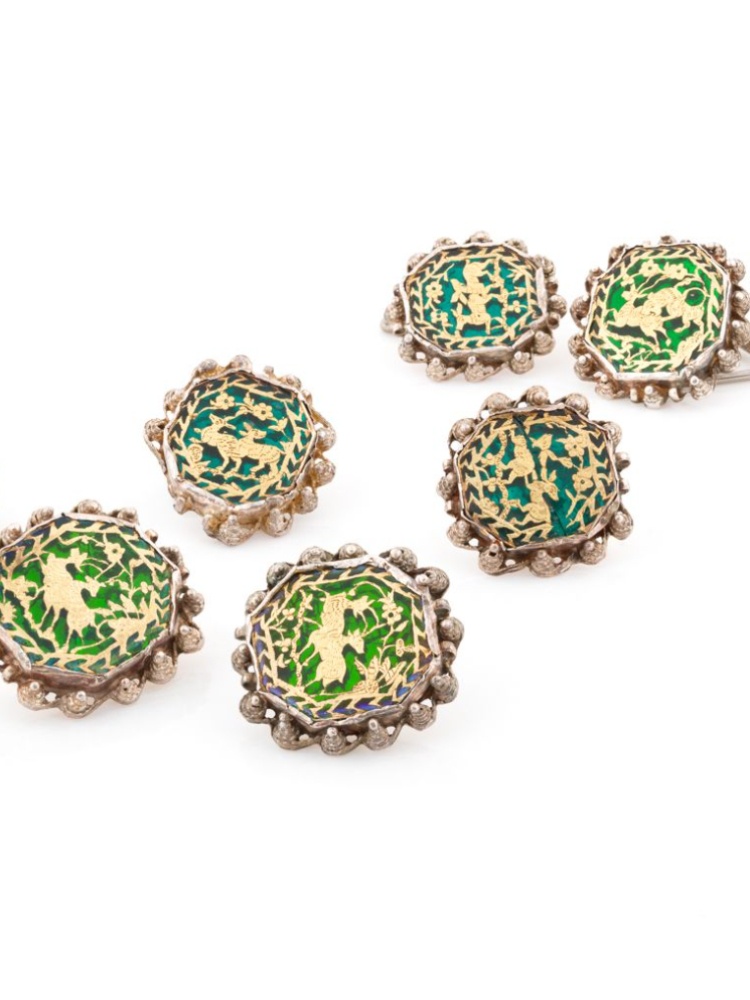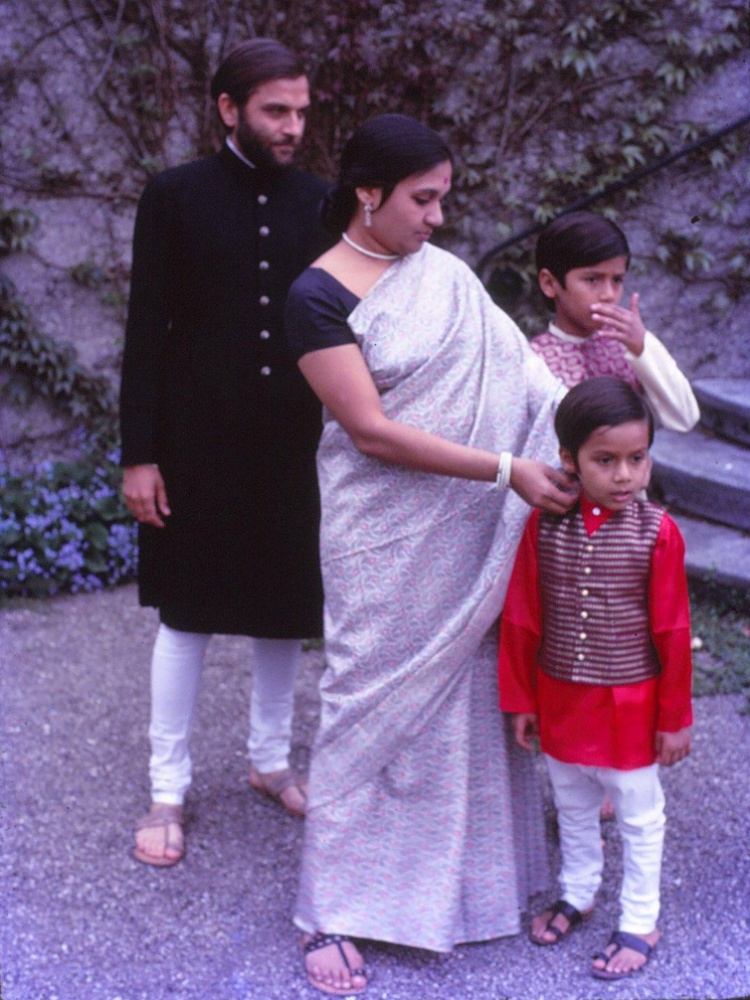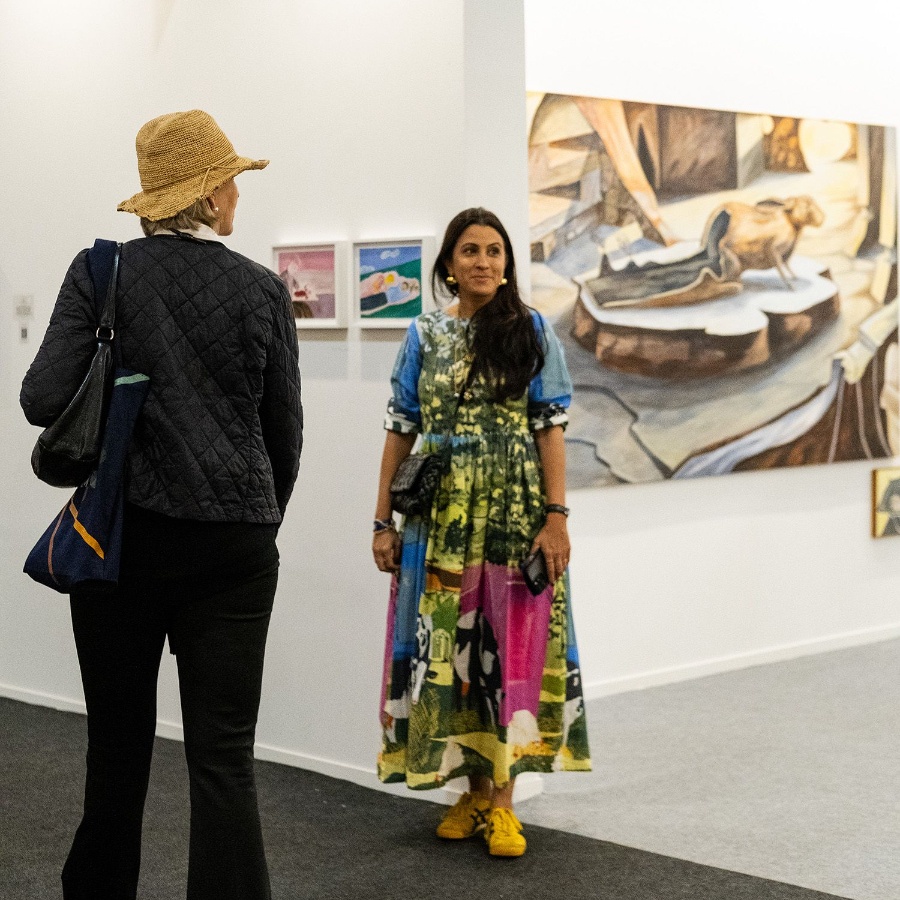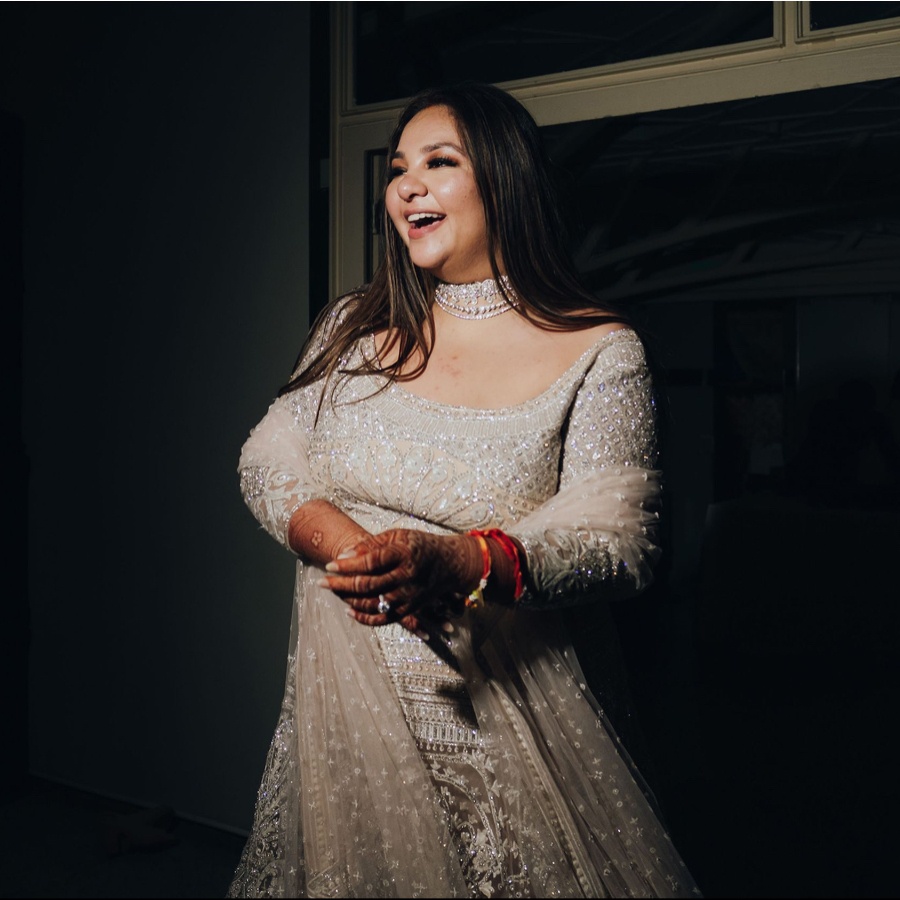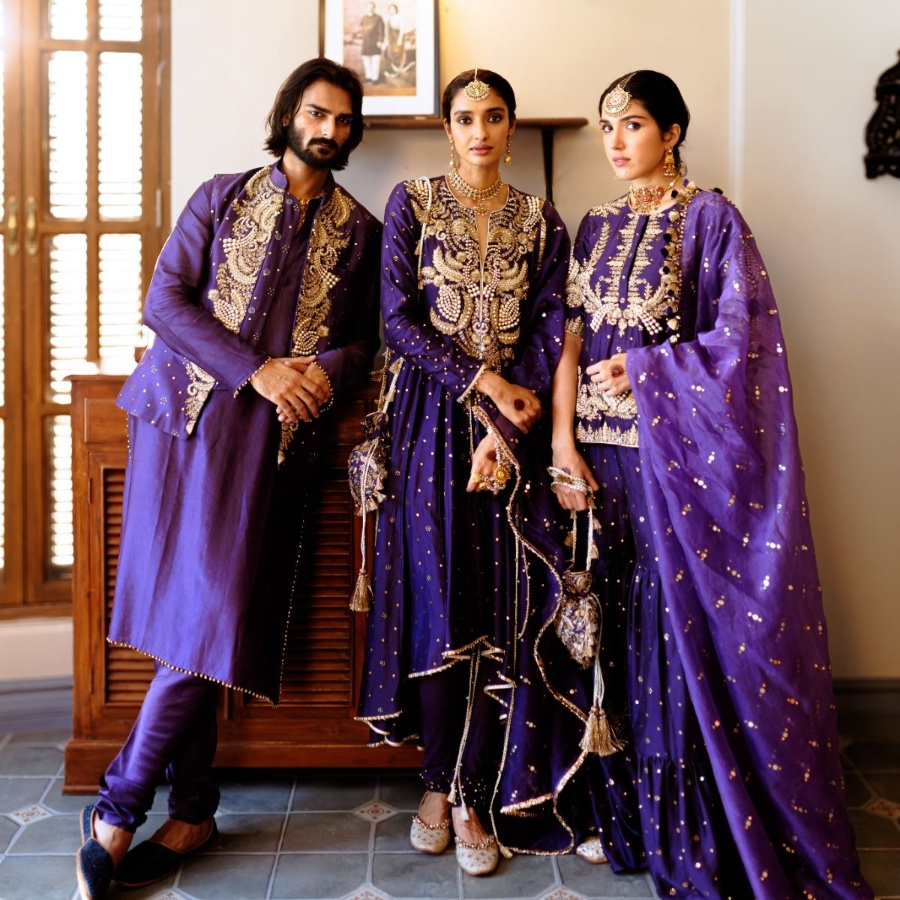When you’re invited to a legacy jewellery exhibit of Gujarat’s foremost matriarchs—you expect to be blinded by emeralds and diamonds the size of boulders against a Julia Hackman Chafé-styled narration announcing caratage and price. Instead, at this exhibit in Ahmedabad, boulder-sized gemstones were dismissed for finely crafted tortoiseshell hair combs, Italian micro-mosaics, a Mexican thunderbird necklace, and a tribal Nagali necklace. In fact, even asparagus gets its minute in the spotlight here, with its very own handcrafted silver serving rack complete with a sauce boat, biters, and tongs.
Which leads to the obvious next question: what in the world was an Indian family in Gujarat in the early 1900s doing with an asparagus holder? “It baffled me too,” says Puja Shah, curator of the collection. “It’s an effort to shop for fresh asparagus today in Ahmedabad, leave alone a century ago. But that’s how I found out that while lunch was Gujarati fare, dinner [at the Mangaldas household] was always continental, until the Swadeshi movement.” The 19th-century Edwardian set in question was imported during colonial rule in India by Ambalal Sarabhai, owner of the Calico Textile Mills, and gifted to his daughter Leena Sarabhai Mangaldas. It was acquired from Mappin & Webb, the heritage British brand whose clients include every British monarch since Queen Victoria, Marie Antoinette, the last Czar of Russia, Winston Churchill, and Grace Kelly.
